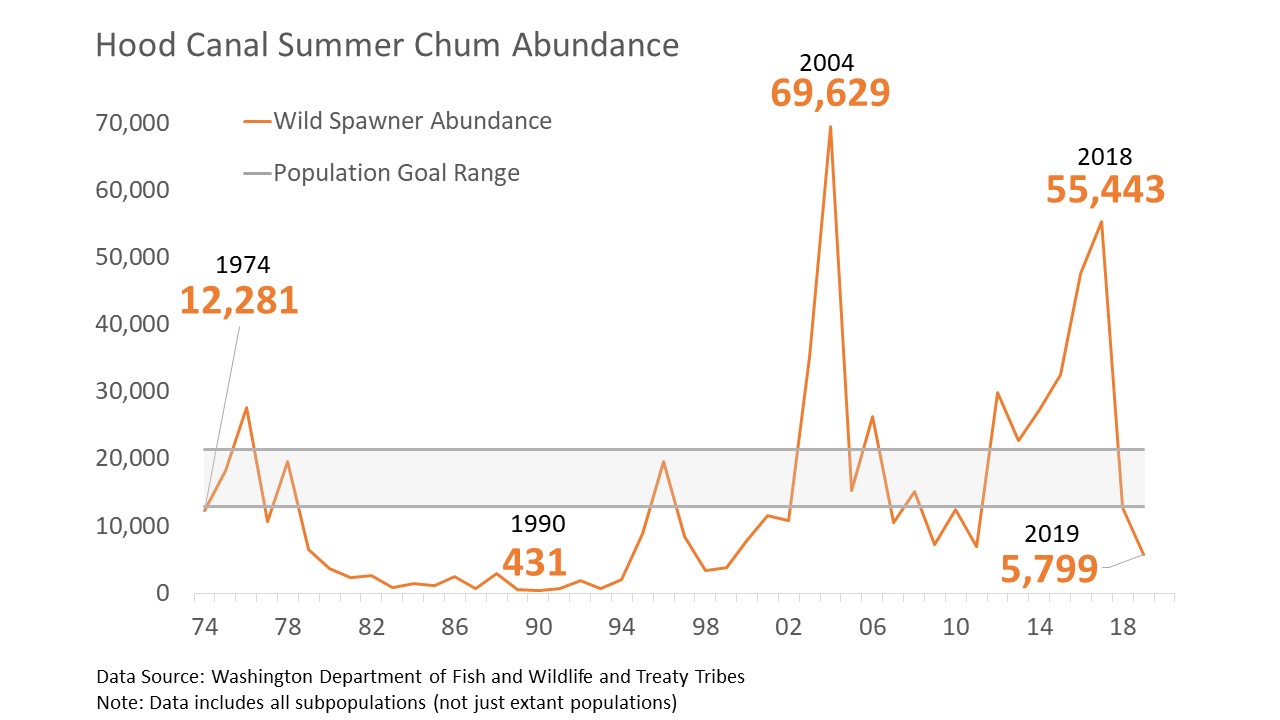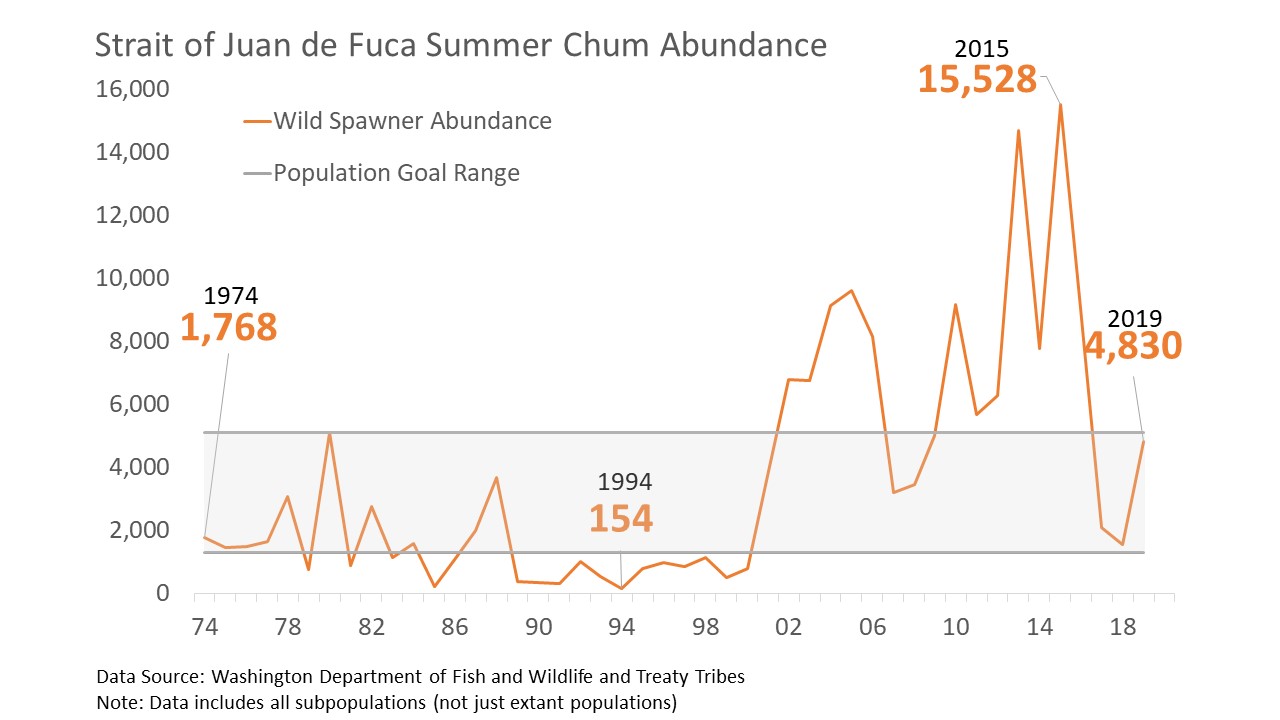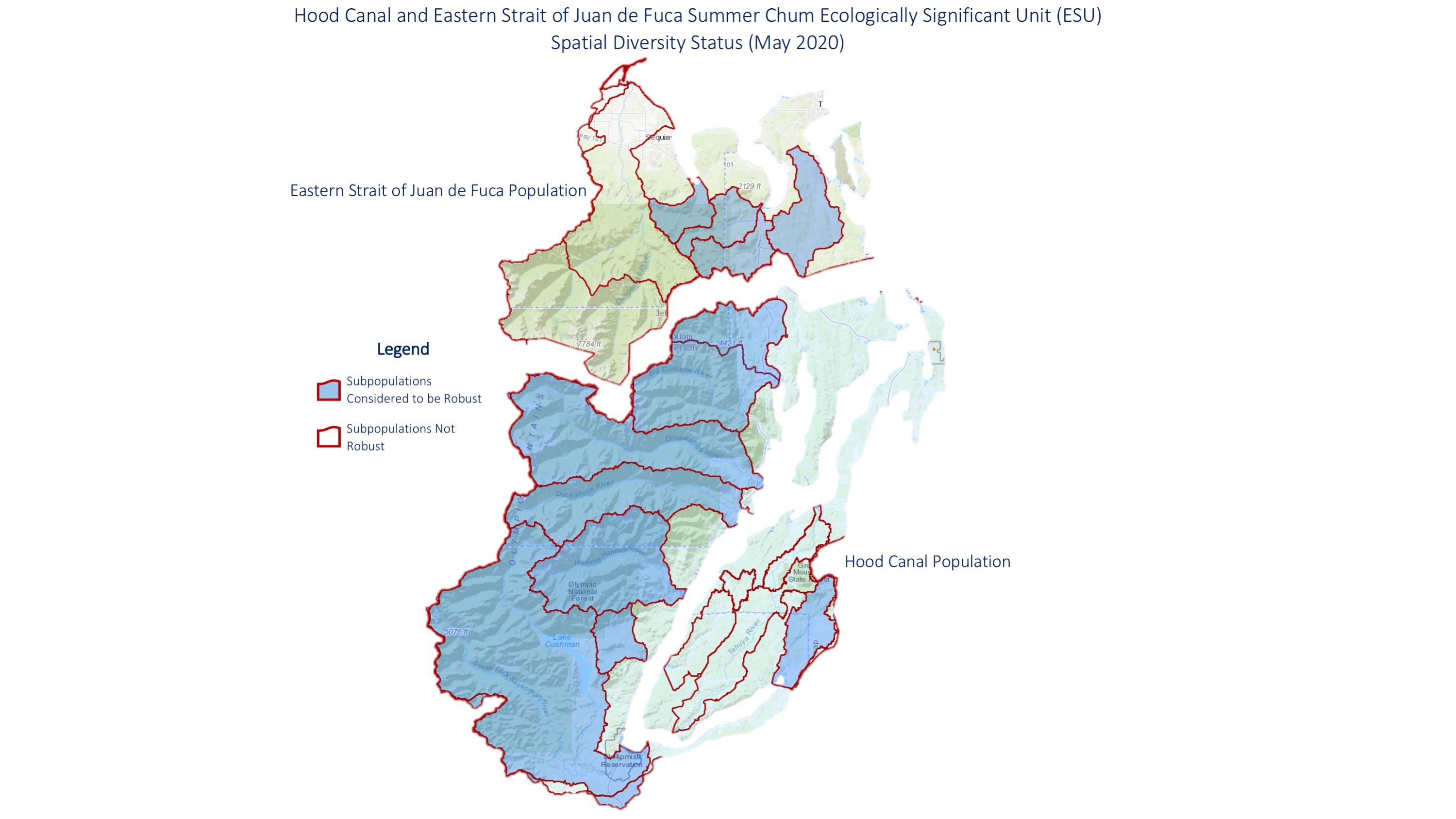Salmon

Salmon are the heartbeat of Hood Canal
- Recreational opportunities
- A cultural link, including Skokomish and Port Gamble S’Klallam Tribal customs, as well as non-tribal traditions in the region
- An important subsistence food source that has sustained this area’s inhabitants for thousands of years
- Jobs (e.g., fishing, tourism) and revenue to the local economy
- An indication of the overall health of the ecosystem
- A nutrient transport mechanism between freshwater and marine environments
Our salmon recovery efforts in Hood Canal show signs of success
All salmon species have unique life histories and we are developing suitable strategies to address their needs.
There are a number of large-scale efforts designed to increase the number and diversity of Hood Canal salmonids, and address the key challenges facing our recovery goals, including:
- Carry out large estuary management and restoration projects
- Implement the Hood Canal and Eastern Strait of Juan de Fuca Summer Chum Salmon Recovery Plan
- Implement the Skokomish and Mid Hood Canal Chinook Salmon Recovery Plan
- Maintain healthy Hood Canal salmon populations at harvestable levels by properly managing the annual fisheries to meet escapement needs, and allow the necessary number or fish to return upriver to spawn
- Provide salmon for commercial, recreational, and subsistence harvesting by utilizing approved practices to protect the integrity of the Hood Canal hatchery programs
The Washington Legislature designated the HCCC as the Regional Recovery Organization for Hood Canal and Eastern Strait of Juan de Fuca Summer Chum salmon. The Hood Canal region is also a Puget Sound Salmon Recovery Region for Chinook and steelhead; and the HCCC is its Lead Entity, responsible for the implementation of the Puget Sound Chinook recovery plan (approved by NOAA in 2007), and recovery planning for Puget Sound steelhead
Learn more about what each of us can do to help recover our Hood Canal salmon.


